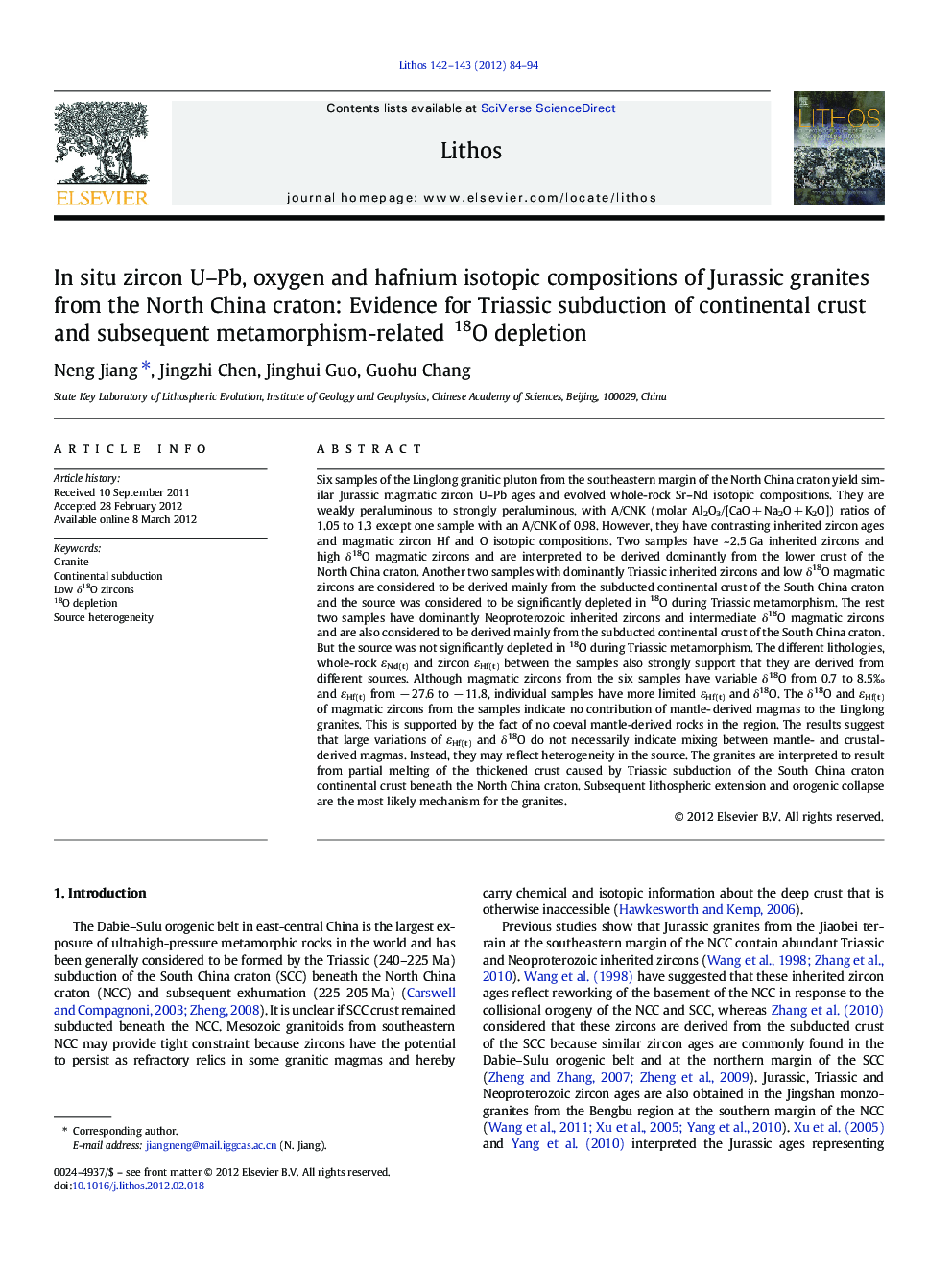| کد مقاله | کد نشریه | سال انتشار | مقاله انگلیسی | نسخه تمام متن |
|---|---|---|---|---|
| 4716595 | 1638708 | 2012 | 11 صفحه PDF | دانلود رایگان |

Six samples of the Linglong granitic pluton from the southeastern margin of the North China craton yield similar Jurassic magmatic zircon U–Pb ages and evolved whole-rock Sr–Nd isotopic compositions. They are weakly peraluminous to strongly peraluminous, with A/CNK (molar Al2O3/[CaO + Na2O + K2O]) ratios of 1.05 to 1.3 except one sample with an A/CNK of 0.98. However, they have contrasting inherited zircon ages and magmatic zircon Hf and O isotopic compositions. Two samples have ~ 2.5 Ga inherited zircons and high δ18O magmatic zircons and are interpreted to be derived dominantly from the lower crust of the North China craton. Another two samples with dominantly Triassic inherited zircons and low δ18O magmatic zircons are considered to be derived mainly from the subducted continental crust of the South China craton and the source was considered to be significantly depleted in 18O during Triassic metamorphism. The rest two samples have dominantly Neoproterozoic inherited zircons and intermediate δ18O magmatic zircons and are also considered to be derived mainly from the subducted continental crust of the South China craton. But the source was not significantly depleted in 18O during Triassic metamorphism. The different lithologies, whole-rock εNd(t) and zircon εHf(t) between the samples also strongly support that they are derived from different sources. Although magmatic zircons from the six samples have variable δ18O from 0.7 to 8.5‰ and εHf(t) from − 27.6 to − 11.8, individual samples have more limited εHf(t) and δ18O. The δ18O and εHf(t) of magmatic zircons from the samples indicate no contribution of mantle- derived magmas to the Linglong granites. This is supported by the fact of no coeval mantle-derived rocks in the region. The results suggest that large variations of εHf(t) and δ18O do not necessarily indicate mixing between mantle- and crustal-derived magmas. Instead, they may reflect heterogeneity in the source. The granites are interpreted to result from partial melting of the thickened crust caused by Triassic subduction of the South China craton continental crust beneath the North China craton. Subsequent lithospheric extension and orogenic collapse are the most likely mechanism for the granites.
► The Linglong granites yield similar magmatic zircon U–Pb ages but contrasting Hf and O isotopes.
► Samples with high zircon δ18O are derived mainly from the lower crust of the North China craton.
► Samples with variable zircon δ18O are derived mainly from the subducted South China craton crust.
► Variable εHf(t) and δ18O result from source heterogeneity caused by continental subduction.
Journal: Lithos - Volumes 142–143, June 2012, Pages 84–94